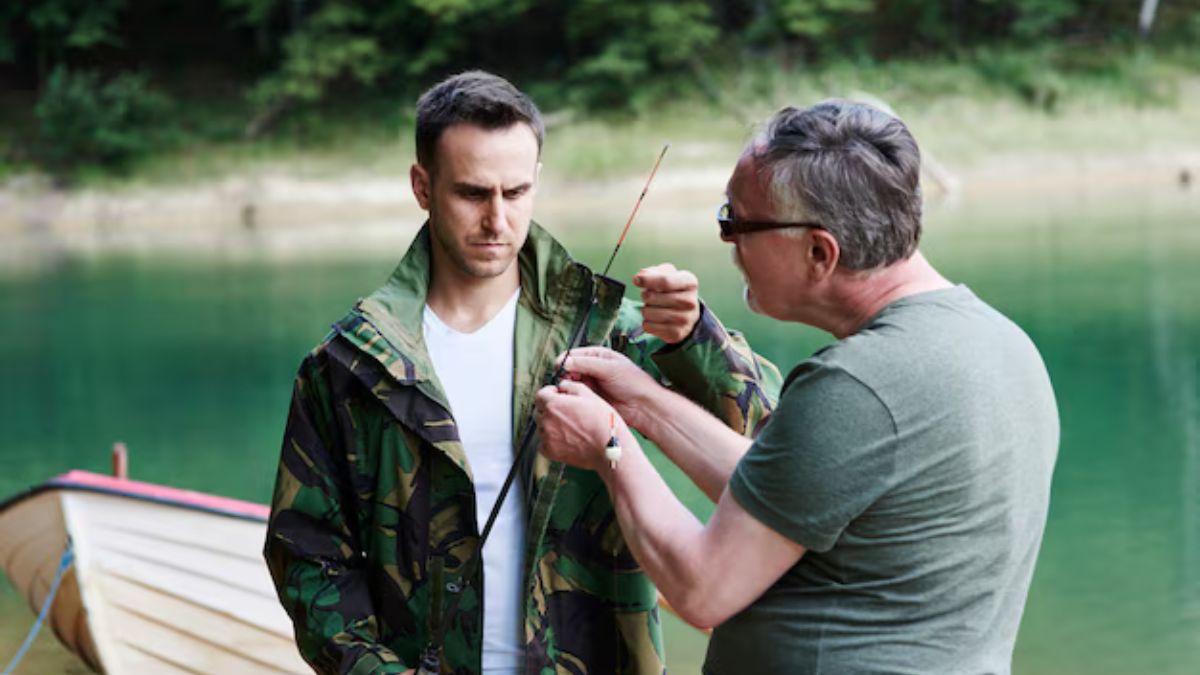HOME
komik hisashiburi ni jikka ni kaettara otouto ga ts shiteta

komik hisashiburi ni jikka ni kaettara otouto ga ts shiteta” Step into the heartwarming world of “Komik Hisashiburi Ni Jikka,” a tale that will tug at your heartstrings and leave you with a warm glow. Join us on a journey filled with family bonds, unexpected reunions, and valuable life lessons. Get ready to dive into a story that explores the complexities of relationships and the power of forgiveness. Let’s embark on this emotional rollercoaster together!
The Story of the Main Character and His Absence from Home
In the bustling city of Tokyo, a young man named Takeshi found himself caught up in the whirlwind of life. Working long hours at his demanding job, he slowly drifted away from his family and hometown. His absence left a void in their once close-knit relationship, causing ripples of loneliness and misunderstanding to spread.
Takeshi’s younger brother, Satoshi, felt the impact of his absence deeply. He idolized Takeshi and had always looked up to him for guidance and support. With his older brother gone, Satoshi struggled to fill the void left behind. Their parents too felt the strain as they watched their sons drift apart without knowing why.
As time passed and distance grew between them, Takeshi realized that success in the big city came at a cost – his family’s happiness. The story of Takeshi’s absence from home is not just about physical distance but also emotional disconnect that can only be bridged through understanding and forgiveness.
The Unexpected Return and Reunion with the Younger Brother
After a long absence, the main character finally returned home to his family. The reunion with his younger brother was filled with mixed emotions – joy, surprise, and perhaps a hint of apprehension. As they stood face to face for the first time in what felt like forever, there was a moment of awkward silence before the floodgates of conversation opened.
The younger brother’s eyes sparkled with disbelief and delight as he took in the sight of his older sibling standing before him. Memories flooded back, both happy and bittersweet. Questions hung in the air – where had he been all this time? Why did he leave without a word? But amidst all these unspoken queries, there was an undeniable sense of relief at being reunited once again.
Their bond may have been strained by distance and time apart, but in that instant, it felt like nothing had changed between them. Laughter mingled with tears as they caught up on lost moments and shared stories from their separate journeys. And as they sat down together, savoring each other’s presence after so long apart, it became clear that family truly is where the heart finds its home.
The Changes in the Younger Brother’s Behavior
Upon his return, the older brother noticed a significant shift in his younger sibling’s behavior. Gone was the carefree spirit that once defined him; instead, he seemed burdened by something unseen. The young man’s laughter had faded, replaced by a somber demeanor that raised questions in the elder sibling’s mind.
Attempts to engage in conversation were met with vague responses and avoidance tactics. It was as if a wall had been erected between them, blocking any attempt at true connection. Concern crept into the older brother’s heart as he watched from afar, unsure of how to breach this newfound distance.
Small gestures of kindness were rebuffed, further deepening the mystery surrounding his brother’s sudden change. Was it merely growing pains or something more profound? The older sibling resolved to uncover the truth behind this transformation and restore their bond to its former strength.
Discovering the Truth Behind the Changes
Curiosity gnawed at the main character as they observed their younger brother’s changed behavior. There was something different about him, something they couldn’t quite put their finger on. It was like he was hiding a secret, and it piqued their interest.
One day, while rummaging through his belongings, the main character stumbled upon a hidden journal. Flipping through its pages revealed a side of their brother they had never seen before – one filled with struggles and inner turmoil.
The truth slowly unraveled before them, painting a picture of pain and loneliness that their brother had been silently battling all this time. The pieces started to fall into place, making sense of his recent changes in personality.
As the main character digested this newfound knowledge, empathy replaced confusion in their heart. They realized that understanding his struggles was the key to bridging the gap that had formed between them.
Dealing with Family Issues and Misunderstandings
Family issues and misunderstandings can often be challenging to navigate. When the main character returned home after a long absence, he was met with unexpected tension within his family. His younger brother’s behavior had changed, leaving him puzzled and concerned. The once close bond they shared seemed strained, filled with unspoken words and unresolved feelings.
As they attempted to reconnect, old wounds resurfaced, causing further discord between them. Misunderstandings clouded their interactions as both struggled to communicate effectively. Emotions ran high as they grappled with past grievances and present realities.
Through heartfelt conversations and moments of vulnerability, they slowly began to unravel the root causes of their conflicts. Slowly but surely, understanding started to replace resentment, paving the way for healing within their fractured relationship.
Dealing with family issues requires patience, empathy, and a willingness to listen without judgment. It’s a journey filled with ups and downs but ultimately leads to growth and strengthened bonds in the end.
Lessons Learned and a Heartwarming Ending
As the story unfolds, we see how misunderstandings and distance can strain even the closest of family bonds. Through the challenges faced by the main character and his younger brother, we learn valuable lessons about communication, forgiveness, and unconditional love.
In the end, it’s not about who was right or wrong but about coming together as a family to overcome obstacles and grow stronger from them. The heartwarming reunion between the brothers serves as a reminder that no matter what trials may come our way, with understanding and empathy, we can rebuild what once seemed lost.
“Komik Hisashiburi Ni Jikka Ni Kaettara Otouto Ga Ts Shiteta” beautifully captures the essence of family dynamics and teaches us that it’s never too late to mend broken relationships. Let this touching tale inspire you to cherish your loved ones and always strive for reconciliation in times of discord.
HOME
Bowtie Snakes: Nature’s Intriguing Patterns and Behaviors

Bowtie snakes are a mesmerizing species that captivate reptile enthusiasts and casual observers alike. With their striking patterns resembling elegant bowties, these serpents stand out in the animal kingdom for both their appearance and behavior. Found in various habitats across the globe, bowtie snakes possess unique adaptations that enhance their survival skills. From hunting techniques to reproductive habits, there’s much to uncover about these fascinating creatures. Join us as we explore the intriguing world of bowtie snakes and discover what makes them so special in nature’s tapestry.
Physical Characteristics and Habitat
Bowtie snakes are captivating creatures known for their distinctive patterns. Their name comes from the unique bowtie-like markings that adorn their scales. These striking colors can vary widely, ranging from vibrant yellows and greens to more muted browns and blacks.
Typically measuring between three to six feet in length, they possess a slender body structure that aids in agility. Their smooth scales glisten under sunlight, providing both beauty and camouflage among foliage.
These snakes thrive in diverse habitats including forests, grasslands, and wetlands. They prefer areas with plenty of cover like dense vegetation or rocky outcrops where they can hide from potential predators.
The right habitat is essential for their survival as it offers ample opportunities for hunting and breeding while protecting them from threats. Understanding these aspects of the bowtie snake helps highlight its role in maintaining ecological balance within its environment.
Unique Adaptations for Survival
Bowtie snakes possess fascinating adaptations that enhance their survival in diverse environments. Their distinctive coloration provides effective camouflage, allowing them to blend seamlessly into their surroundings. This ability helps them evade predators and ambush unsuspecting prey.
These snakes also exhibit remarkable thermoregulation skills. They bask under the sun to raise their body temperature, which is essential for digestion and metabolism. When it gets too hot, they retreat to shaded areas or burrows.
Additionally, bowtie snake have developed a unique defensive mechanism. When threatened, they can flatten their bodies and display vibrant patterns that startle potential attackers. This visual disruption gives them a chance to escape unharmed.
Their diet consists of various small mammals and reptiles, showcasing an adaptable hunting strategy. These traits collectively contribute to the resilience of bowtie snake in ever-changing ecosystems.
Behavior and Hunting Techniques
Bowtie snakes exhibit fascinating hunting techniques that showcase their adaptability. These reptiles are primarily nocturnal, using the cover of darkness to ambush unsuspecting prey.
With a keen sense of smell and excellent vision, they can detect vibrations in the ground, allowing them to pinpoint potential meals even before making a move. Their distinctive bowtie patterns provide effective camouflage among foliage and rocks.
When it comes time to strike, bowtie snake employ a swift and calculated approach. They often remain motionless for extended periods, waiting patiently until the perfect moment arrives. With incredible speed, they lunge at their prey with precision.
Once caught, these snakes use constriction as their main method of subduing larger animals before consumption. This unique combination of stealth and strength makes them highly successful hunters in diverse environments.
Reproduction and Life Cycle
Bowtie snake have a fascinating reproductive process that begins with courtship displays. Males often engage in intricate dances, showcasing their vibrant patterns to attract females. This visual spectacle is not just for show; it plays a crucial role in mate selection.
Once mating occurs, female bowtie snake typically lay between 4 to 20 eggs. The number can vary based on factors like age and health of the snake. Females carefully select nesting sites, usually hidden within leaf litter or under rocks, providing protection from predators.
After around two months of incubation, hatchlings emerge fully formed and ready to face the world. These young snakes exhibit the same distinctive markings as adults but are smaller and more vulnerable initially. They rely on instinctual behaviors for survival, such as seeking shelter immediately after hatching to evade potential threats.
Conservation Efforts and Threats
Bowtie snakes face numerous threats that jeopardize their survival. Habitat loss remains a significant concern, primarily due to urban development and agriculture. As natural environments shrink, these unique creatures struggle to find suitable homes.
In response, conservation efforts are underway. Organizations work tirelessly to protect critical habitats through land preservation initiatives. These projects aim to maintain the delicate balance of ecosystems that support bowtie snake populations.
Illegal trade poses another danger. Due to their striking appearance, some may fall victim to collectors seeking exotic pets. Raising awareness about this issue is essential in preventing exploitation and ensuring these snakes thrive in the wild.
Research programs also play a vital role by studying population dynamics and behaviors. Understanding how bowtie snakes interact with their environment helps create more effective conservation strategies tailored specifically for them.
Fun Facts and Cultural Significance
Bowtie snakes have a fascinating presence in various cultures. Their unique patterns often symbolize transformation and adaptability, echoing the intricate designs of their scales.
In some Indigenous communities, these snakes are seen as messengers of change, embodying lessons about resilience in nature. They inspire tales that celebrate survival against odds.
Their striking appearance also captivates artists and designers. Bowtie snake motifs appear in jewelry, clothing, and home decor, serving as reminders of nature’s beauty.
Moreover, they play roles in folklore across different regions. Stories featuring bowtie snakes often highlight themes of wisdom and protection. Such narratives deepen our connection to wildlife and emphasize respect for all creatures.
These intriguing reptiles remind us not only of biodiversity but also how intertwined we are with the world around us through culture and art.
Conclusion
Bowtie snakes are a fascinating blend of beauty and adaptability. Their unique patterns not only serve as camouflage but also reflect the intricate designs of nature. These reptiles have evolved remarkable traits that allow them to thrive in diverse habitats, showcasing their resilience.
The behaviors displayed by bowtie snakes during hunting reveal their cunning intelligence. From ambush techniques to swift strikes, they demonstrate an impressive understanding of their environment. Reproduction is equally captivating, with complex courtship rituals that ensure the survival of future generations.
As we explore the conservation efforts aimed at protecting bowtie snakes from various threats, it becomes clear how crucial it is to preserve their natural habitats. Awareness and education can make a significant difference in safeguarding these intriguing creatures for years to come.
With their striking appearance and vital role in ecosystems, bowtie snakes deserve admiration and respect. Learning more about them enhances our appreciation for wildlife and reinforces our commitment to environmental stewardship. The world would be less vibrant without these extraordinary snakes weaving through our landscapes.
HOME
Exploring Qxefv: Tips for Effective Implementation

In today’s fast-paced business landscape, organizations are constantly searching for innovative solutions to stay ahead. Enter Qxefv, a transformative approach designed to enhance operational efficiency and drive growth. But what exactly is Qxefv? Imagine a system that not only optimizes processes but also fosters collaboration and boosts productivity across teams. As companies face mounting pressures to adapt and evolve, implementing Qxefv could be the game-changer you need. Let’s dive into how this powerful tool can revolutionize your organization from the ground up.
Benefits of Implementing Qxefv
Implementing Qxefv brings a multitude of advantages to organizations. One standout benefit is enhanced efficiency. By streamlining processes, teams can focus on what matters most—delivering value.
Another key advantage is improved collaboration. Qxefv fosters communication across departments, breaking down silos and encouraging teamwork. This collaborative spirit often leads to innovative solutions that drive growth.
Data-driven decision-making is another significant perk. With Qxefv’s analytics capabilities, businesses gain insights into performance metrics and trends. These insights empower leaders to make informed choices that align with company goals.
Additionally, cost savings are a major attraction for many companies adopting Qxefv. By optimizing resource allocation and reducing waste, organizations can allocate funds more effectively.
The adaptability of Qxefv allows it to grow alongside your business needs. As your organization evolves, so does the functionality of this powerful tool.
Step-by-Step Guide for Implementation
Implementing Qxefv requires a structured approach. Start by assessing your current processes. Identify areas where Qxefv can add value.
Next, form an implementation team. This group should include key stakeholders from various departments to ensure diverse insights and smooth integration.
Then, set clear objectives. Define what success looks like for your organization with Qxefv in place.
After establishing goals, focus on training. Equip your team with the necessary skills through workshops or online courses tailored to Qxefv’s functionalities.
Once training is complete, begin a pilot phase. Test the system in a controlled environment before full-scale rollout. Gather feedback during this period for adjustments.
Monitor performance continuously post-implementation. Regular evaluation helps refine processes and optimize results over time while ensuring that everyone remains aligned with your objectives.
Common Challenges and How to Overcome Them
Implementing qxefv can be a transformative experience, yet challenges often arise. One common hurdle is resistance to change. Employees may feel uncertain about new processes, leading to pushback.
To combat this, clear communication is crucial. Share the benefits of qxefv openly and involve team members in discussions. This fosters a sense of ownership and eases transitions.
Another challenge is technical difficulties. Integration with existing systems might not be seamless at first. Testing early and providing comprehensive training can help bridge gaps.
Measuring success can prove tricky without proper metrics in place. Establish key performance indicators (KPIs) that align with your goals for qxefv from the start. Regularly review these KPIs to stay on track.
Addressing these obstacles head-on will pave the way for smoother implementation and better outcomes as you embrace qxefv’s potential within your organization.
Real-Life Success Stories
Many organizations have embraced qxefv, transforming their operations in remarkable ways. One notable success story comes from a mid-sized tech company that struggled with project management inefficiencies. By implementing qxefv, they streamlined communication and enhanced collaboration among teams. The result? A 30% increase in project delivery speed.
Another inspiring example is a healthcare provider that utilized qxefv to improve patient care coordination. With real-time data sharing and improved workflows, this organization saw a significant reduction in patient wait times and increased satisfaction scores.
Even small businesses are reaping the benefits of qxefv. A local retail shop adopted it for inventory management, leading to more accurate stock levels and reduced overstock costs. This not only boosted profits but also allowed them to focus on customer experience.
These stories highlight how adaptable qxefv can be across various sectors while driving efficiency and growth.
Best Practices for Maximizing Results with Qxefv
To maximize results with Qxefv, start by aligning your goals with its capabilities. Clearly define what success looks like for your organization. This clarity will guide implementation and keep the team focused.
Engage all stakeholders early in the process. Their insights can enhance adoption and help identify potential roadblocks before they arise. Regular communication ensures everyone is on the same page.
Utilize training sessions to get everyone up to speed. Knowledge gaps can hinder progress, so offer ongoing support as users familiarize themselves with Qxefv’s features.
Monitor performance metrics closely during rollout. Analyzing data helps you make informed adjustments in real time, leading to better outcomes.
Encourage a culture of feedback. Continuous improvement flourishes when team members feel comfortable sharing their experiences and suggesting enhancements related to Qxefv’s use within the organization.
Conclusion: Embracing the Power of Qxefv in Your Organization
Embracing Qxefv can transform how your organization operates. Its innovative design and potential for integration make it a powerful tool. By harnessing its capabilities, you position yourself to enhance efficiency and collaboration.
As you implement Qxefv, consider the tips shared in this article. Tailor your approach based on the unique needs of your team. The real-life success stories serve as inspiration; they show that with commitment and strategic planning, substantial improvements are achievable.
The benefits of adopting Qxefv extend beyond immediate results. They pave the way for long-term growth and adaptability in an ever-evolving landscape. With careful navigation of challenges and a focus on best practices, organizations can unlock remarkable potential.
Now is the time to take action. Embrace Qxefv wholeheartedly and witness how it revolutionizes operations within your organization.
HOME
Back Casting Room: Enhancing Your Fly Fishing Skills

Fly fishing is more than just a hobby; it’s an art form that blends patience, skill, and a deep connection to nature. Whether you’re standing knee-deep in a river or perched on the edge of a serene lake, every cast opens up new opportunities for adventure. One crucial aspect of this craft is backcasting—a technique that can make or break your success on the water.
Imagine yourself casting gracefully as you watch your line dance through the air before landing perfectly on the surface of the water. But to achieve that level of finesse, mastering backcasting is essential. This technique allows you to create longer casts with precision while avoiding obstacles behind you.
In this guide, we’ll dive into everything you need to know about honing your backcasting skills—from understanding its importance to identifying common pitfalls and sharing expert tips for improvement. Whether you’re a rookie angler or looking to refine your techniques, enhancing your abilities in what we like to call the “back casting room” could be just what you need for an unforgettable fly fishing experience!
The Importance of Proper Backcasting Technique
Proper backcasting technique is crucial for any fly fisher looking to refine their skills. It sets the stage for a successful cast, allowing you to place your fly precisely where fish are lurking.
When executed correctly, backcasting gives you the necessary distance and power. This allows the line to build momentum before it unfurls forward. A smooth transition between the two phases makes all the difference in accuracy.
Many new anglers overlook this step, focusing solely on their forward cast. However, neglecting your backcast can lead to tangles or missed opportunities.
Practicing in open spaces helps develop muscle memory. With time and dedication, you’ll find that mastering this skill enhances both your confidence and success on the water.
Common Mistakes in Backcasting and How to Avoid Them
Backcasting can be tricky, and many anglers fall into common pitfalls. One frequent mistake is not having enough space behind you. If you’re in a cramped area, your backcast may hit obstacles like trees or bushes, leading to frustration.
Another issue arises from incorrect rod positioning. Anglers often raise the rod tip too high during the backcast. This can result in poor line control and energy loss. Instead, aim for a more level trajectory that allows for smoother transitions.
Timing plays a crucial role as well. Rushing the cast can compromise your line’s momentum, resulting in tangles or weak deliveries. Focus on a smooth rhythm instead of speed.
Failing to follow through with your cast limits distance and accuracy. A proper follow-through ensures that all the energy transfers effectively into your forward cast. Being aware of these mistakes helps refine your technique significantly when practicing in any back casting room setting.
Tips for Improving Your Backcasting Skills
To enhance your backcasting skills, start with practice. Spend time in a spacious area where you won’t be disturbed. This allows you to focus entirely on your technique without the pressure of catching fish.
Visualize your movement before executing it. Imagine the path of your line and how it interacts with the water. This mental exercise can improve muscle memory and precision.
Use slow, deliberate motions when casting backward. Rushing can lead to mistakes that become habits over time. Gradually increase speed as you feel more comfortable.
Incorporate video analysis into your training sessions if possible. Recording yourself can reveal areas for improvement that might not be apparent in real-time.
Consider enlisting a mentor or coach who specializes in fly fishing techniques. A fresh set of eyes can provide valuable feedback and guidance tailored to your unique style.
Tools and Equipment for Successful Backcasting
When it comes to successful backcasting, having the right tools can make a significant difference. A quality fly rod is essential. Look for one that matches your skill level and fishing style.
Your line choice also matters greatly. Opt for a weight-forward floating line to facilitate smooth casting movements. It helps to control your cast better, especially during backcasts.
Don’t overlook the importance of leaders and tippets. These components connect your fly to the line and play a crucial role in presentation.
Consider using practice rods or specialized casting tools designed for honing your skills in a controlled environment—a dedicated back casting room can be an excellent investment! With these tools at hand, you’ll find yourself making more precise casts while enjoying the great outdoors even more.
Advanced Techniques for Challenging Fishing Environments
When faced with challenging fishing environments, adaptability is key. One effective technique is the double haul. This method allows you to generate extra line speed, which is crucial in windy conditions. It can significantly improve your distance and accuracy.
Another advanced tactic involves utilizing roll casts when space is limited. This cast requires less back movement, making it ideal for tight spots like overhanging branches or crowded shorelines.
Don’t underestimate the value of adjusting your leader length based on water conditions. A shorter leader can help prevent tangling and enhance control in fast-moving streams.
Practice targeting specific structures such as rocks or fallen trees. By honing in on these locations, you’ll increase your chances of attracting fish hiding within their cover. Each environment presents its own unique challenges; embracing them will elevate your fly fishing experience dramatically.
Safety Precautions when Backcasting
Safety is paramount when backcasting. It’s crucial to be aware of your surroundings. Always check for other anglers, trees, or obstacles behind you before casting.
Ensure that you maintain a safe distance from others. Fly lines can travel quickly and may cause injury if they hit someone unexpectedly.
Wear protective eyewear to shield your eyes from errant hooks and line snaps. A good pair of polarized glasses not only protects but also enhances visibility in the water.
Additionally, consider wearing gloves while handling tackle. This simple precaution can prevent cuts and scrapes during those enthusiastic moments on the water.
Practicing your cast in a wide-open area can help develop confidence while reducing risks associated with tight spaces or crowded environments. Prioritize safety; it allows you to focus on improving your skills without distractions.
Conclusion: Mastering the Art of Backcasting in Fly Fishing
Mastering the art of backcasting can significantly enhance your fly fishing experience. It sets the foundation for effective casting and helps you deliver your line with precision. As you refine this skill, you’ll notice improvements not just in distance but also in accuracy.
By understanding the importance of technique and recognizing common pitfalls, you equip yourself with knowledge that makes every outing more enjoyable. Implementing tips and utilizing proper tools will further elevate your performance on the water.
Advanced techniques allow anglers to tackle various environments confidently while prioritizing safety ensures a worry-free experience. The journey of mastering backcasting is ongoing, filled with practice opportunities that lead to greater satisfaction when reeling in that perfect catch.
Embrace these strategies, devote time to practice, and watch how your abilities flourish as you make each cast count on the serene waters where fly fishing dreams come alive.
-

 TECHNOLOGY4 months ago
TECHNOLOGY4 months agoExploring the Benefits of Using Tanzohub for Your Blog
-

 ENTERTAINMENT4 months ago
ENTERTAINMENT4 months agoThe Legendary Career of the Half of a 1990s-2000s Rock Duo with Six Grammys
-

 HEALTH3 months ago
HEALTH3 months agoThe Ultimate Guide to Using Greenheal.net for Holistic Wellness
-

 HEALTH4 months ago
HEALTH4 months agoThe Secret Ingredient for Radiant Skin: All About Oridzin
-

 NEWS3 months ago
NEWS3 months ago5 Fascinating Facts About Mgj Doppy Tlae That Will Blow Your Mind
-

 ENTERTAINMENT4 weeks ago
ENTERTAINMENT4 weeks agonhentai 455058: The Ultimate Guide to Understanding this Fan-Favorite Manga
-

 HEALTH5 months ago
HEALTH5 months agoQxefv: The Ultimate Solution for Stress Relief and Wellness
-

 NEWS5 months ago
NEWS5 months agoUnlocking the Potential of SSIS 816 in Data Integration
